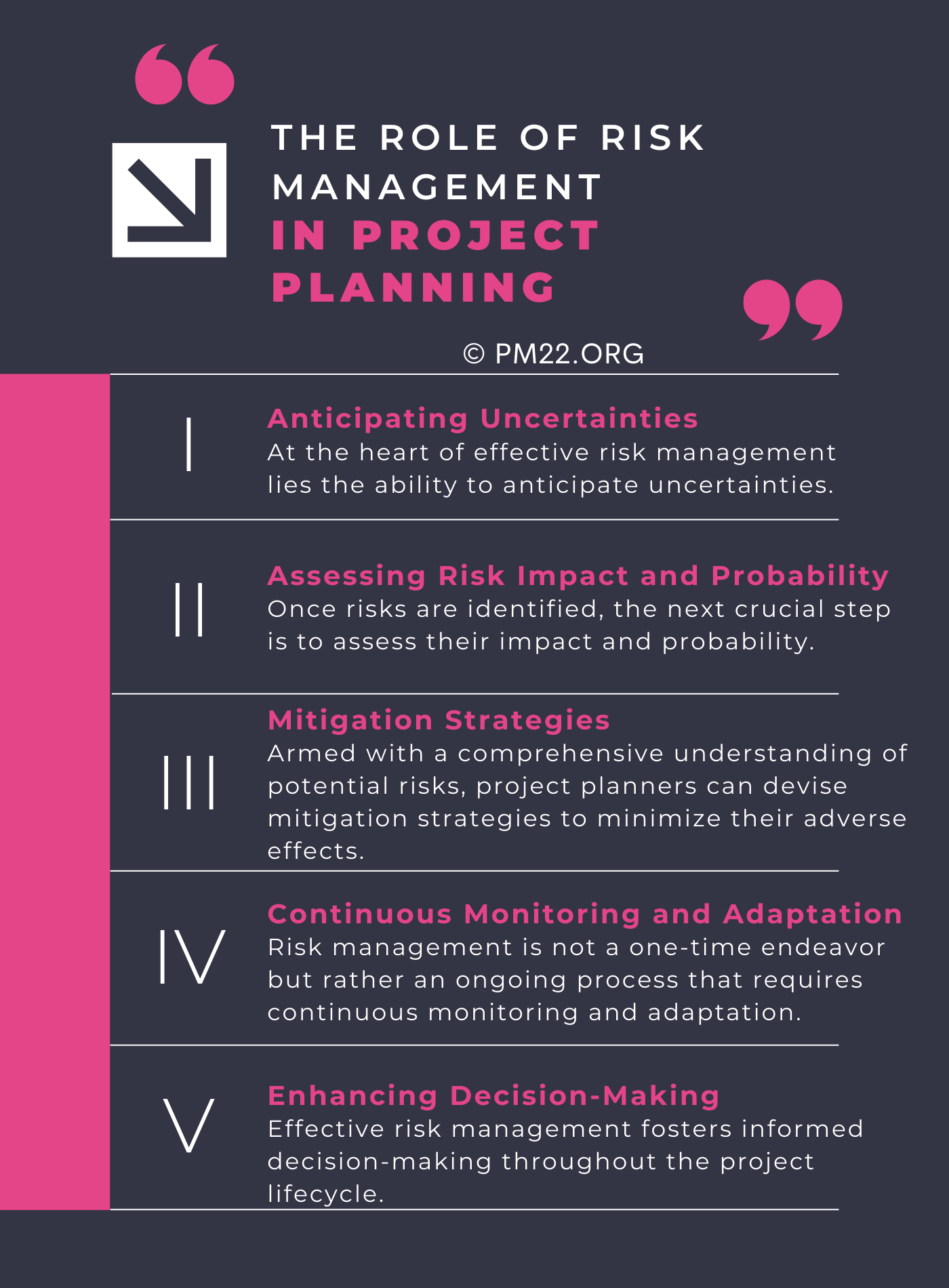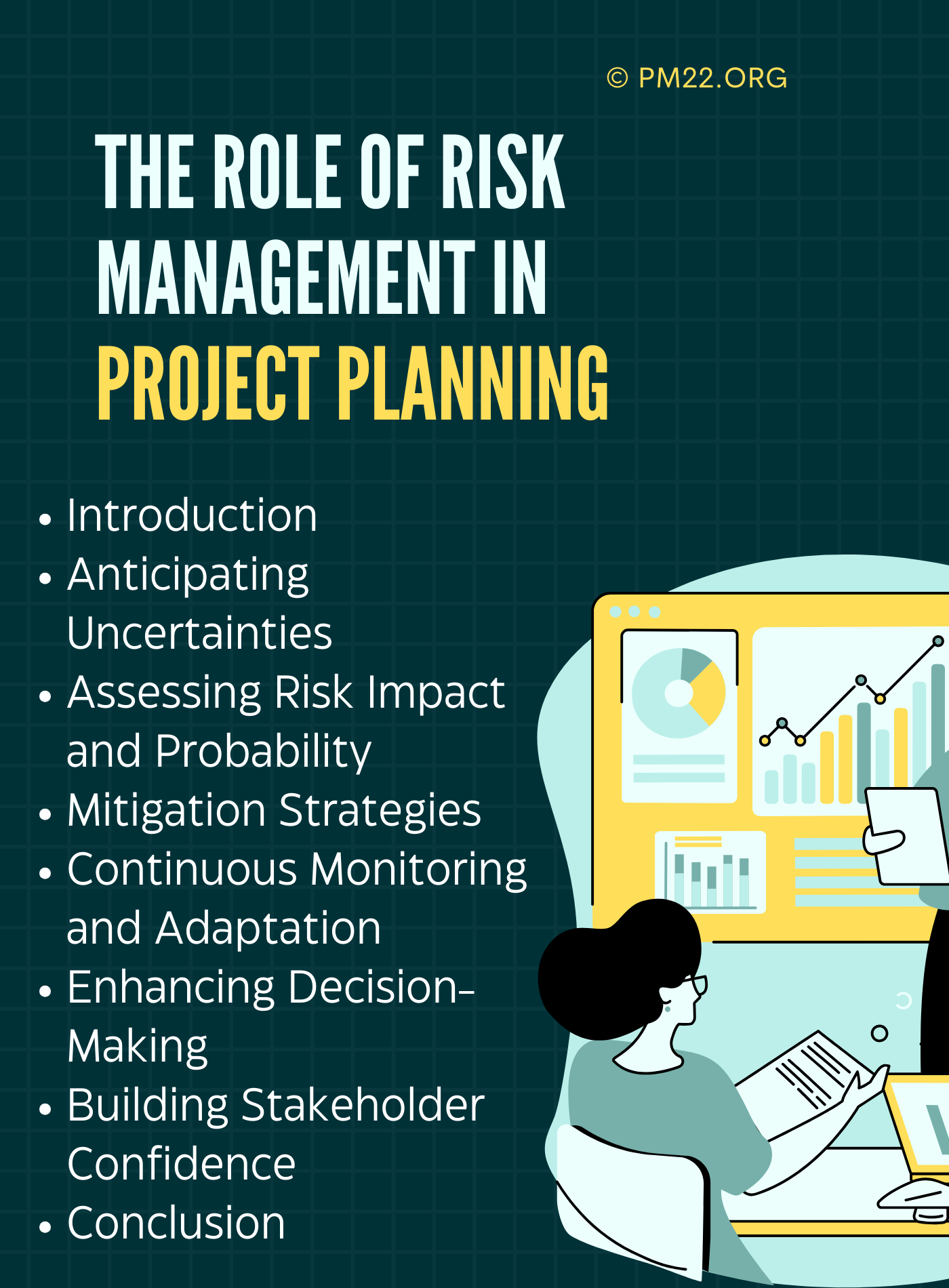Project planning is akin to navigating a ship through unpredictable waters. In this intricate voyage, risk management serves as the compass, guiding the project towards success amidst turbulent challenges. The significance of risk management in project planning cannot be overstated, as it empowers teams to anticipate, assess, and mitigate potential obstacles that may derail progress.
Anticipating Uncertainties
At the heart of effective risk management lies the ability to anticipate uncertainties. Every project, regardless of its scale or scope, is susceptible to various risks – be it technical, financial, environmental, or organizational. Through meticulous planning and analysis, project managers can identify potential risks before they manifest, enabling proactive measures to be implemented.
CLICK HERE TO DOWNLOAD 300+ PROJECT MANAGEMENT TEMPLATES & DOCUMENTS IN EXCEL
Assessing Risk Impact and Probability
Once risks are identified, the next crucial step is to assess their impact and probability. Not all risks are created equal; some possess the potential to cause minor disruptions, while others could result in catastrophic consequences. By evaluating the likelihood of occurrence and the magnitude of impact, project teams can prioritize their response strategies accordingly, focusing resources where they are most needed.
Mitigation Strategies
Armed with a comprehensive understanding of potential risks, project planners can devise mitigation strategies to minimize their adverse effects. This may involve implementing preventive measures to reduce the likelihood of risk occurrence, such as enhancing quality control processes or diversifying supplier networks. Additionally, contingency plans can be developed to address risks that cannot be entirely avoided, ensuring that the project remains resilient in the face of adversity.
Continuous Monitoring and Adaptation
Risk management is not a one-time endeavor but rather an ongoing process that requires continuous monitoring and adaptation. As the project progresses and external factors evolve, new risks may emerge while existing ones may change in nature or severity. Therefore, project teams must remain vigilant, regularly reassessing their risk landscape and adjusting their strategies as needed to stay ahead of potential threats.
CLICK HERE TO DOWNLOAD 300+ PROJECT MANAGEMENT TEMPLATES & DOCUMENTS IN EXCEL
Enhancing Decision-Making
Effective risk management fosters informed decision-making throughout the project lifecycle. By incorporating risk analysis into decision-making processes, project managers can weigh the potential benefits against the associated risks, enabling them to make sound choices that optimize outcomes while safeguarding against potential pitfalls. This ensures that decisions are made with a clear understanding of their implications, minimizing the likelihood of costly mistakes.
Building Stakeholder Confidence
Transparent and robust risk management practices instill confidence among project stakeholders, including investors, clients, and team members. By demonstrating a proactive approach to risk identification and mitigation, project leaders showcase their commitment to project success and stakeholder satisfaction. This not only fosters trust but also encourages greater collaboration and support, laying the foundation for successful project execution.
Conclusion
In the dynamic landscape of project management, risk management serves as a linchpin that holds the entire endeavor together. By anticipating uncertainties, assessing their impact, and implementing mitigation strategies, project teams can navigate through complexities with confidence and resilience. Moreover, effective risk management enhances decision-making, builds stakeholder confidence, and ultimately contributes to the successful realization of project objectives. Thus, integrating risk management into project planning isn’t just a best practice – it’s an essential prerequisite for achieving sustainable success in today’s competitive environment.

